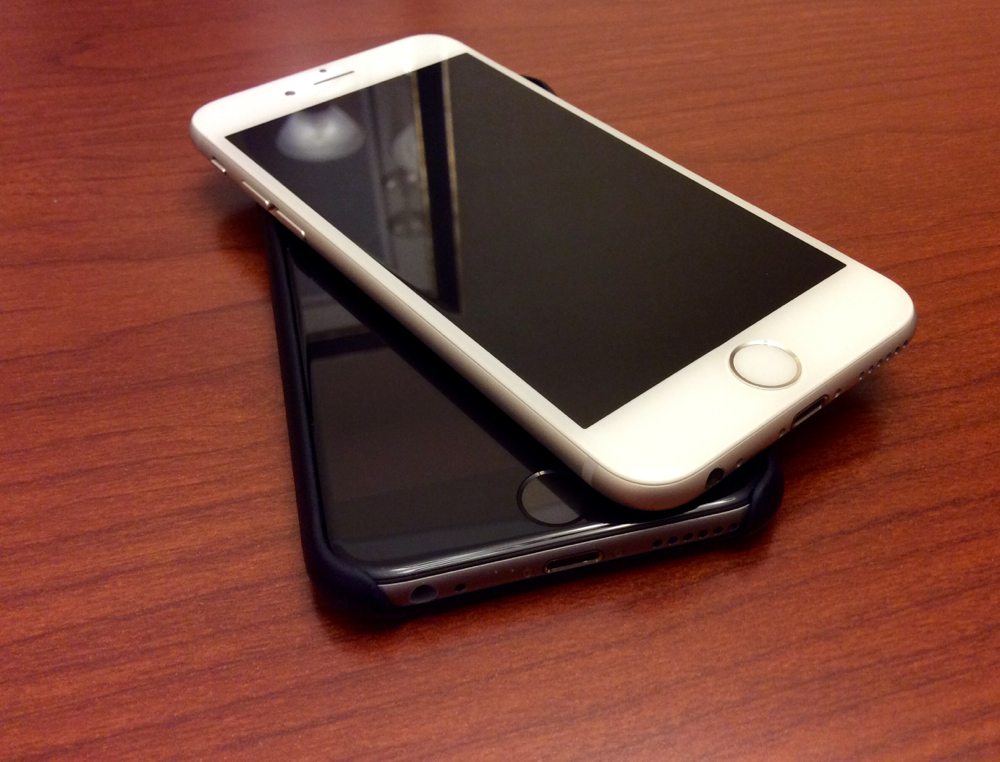
You know who I’m talking about even if I’m not specifically talking about you. This is the person that comes into a meeting at work and plops down a stack of smartphones on the conference room table. I have recently joined the two-smartphone club, and because I see so many others like me struggling to do this dance properly I thought it was time to help make things a little easier.
There are many reasons why one would be compelled to carry two smartphones. Maybe you were in the middle of your personal smartphone 2-year contract when your employer gave you a second smartphone. Other people choose to carry two phones as a way to separate their personal and professional lives. Then there are those of us that must carry two smartphones because the work IT security policy makes it a little too difficult to completely get by with just one phone and use it at both work and at home. Regardless of the reason, you are now the proud owner of two smartphones. Now what?
Personally, I fought having two phones for many years and chose to simply use my personal iPhone for both home and work. But that all changed with an update to my work IT security guidelines. I just wasn’t willing to handicap my personal device and restrict its usage just so I could save my employer from purchasing me a work phone. So I took the plunge. The reason I resisted this for so long is because the whole idea of having a smartphone in the first place is convenience. Everything you could possibly need is right there at your fingertips. But with two smartphones, which phone has the data you need? It may seem trivial, but having to mentally keep track of two devices does consume a non-significant amount of cognitive load. Now you have become a servant of your two smartphones rather than putting your smartphones to work for you. The following tips will help you take advantage of owning two devices rather than allowing your smartphones to complicate your day and dictate your routines for you.
Tip #1: Avoid Carrying Both Devices
Don’t accept the burden of carrying two devices unless there is no other choice. Just because you are carrying twice as much computing power around in your pocket doesn’t mean you are going to be twice as efficient. You are simply going to weigh just a little bit more and have to subconsciously choose which device to pick up time after time all day long. I have chosen to carry my work iPhone during the work week (forwarding my personal cell calls to my work iPhone) and then switching over to my personal iPhone on the weekends. If you can’t avoid carrying both devices, try to minimize the use of one of those devices as much as possible.
Tip #2: Optimize the Mix of Personal and Work Data
Try to minimize the amount of data overlap between devices (don’t cross the streams). Only duplicate data when it is a productivity enhancement to do so. A prime example of this is calendars and task management. If you are standing in your child’s pediatrician’s office and you have your work calendar up on the smartphone in your left hand and your home calendar up on the smartphone in your right hand while trying to find a good time to schedule a doctor’s appointment, then not only do you look silly but you are wasting time (trust me, I speak from experience on this one). If at all possible find a way to merge your calendars. If you can’t completely combine them, then another alternative is to duplicate the early morning and late afternoon events from work calendar on your home calendar. These are the events that will most likely conflict with your personal life. Since my wife doesn’t have access to my work calendar, I create duplicate entries on my iCloud calendar for travel and early/late meetings so she knows about potential conflicts.
Tip #3: Maximize the Use of Cloud Sync
Take advantage of cloud sync options everywhere you can (and to the extent your IT security allows). It can be very frustrating to pick up one of your phones only to realize the data you need is on the other device. I only allow personal apps on my work phone if it is an app I use frequently and it has a cloud sync option I can use. This minimizes confusion and data duplication or even worse… out-of-date information.
Tip #4: App Icon Location Consistency
For the applications that you choose to install on both phones, arrange the icons for these apps to be in the same location on the screen. There is nothing more frustrating than going off muscle memory to get your fix of racing down a mountain on a snowboard chasing llamas (Alto’s Adventure for iOS) only to discover you have mistakenly opened up the Mail app and now you are being productive. Don’t fall victim to that mistake.
Tip #5: Alert Tones
If you are only carrying one device at a time, then try to set the same alert and ringtones for both devices. Otherwise, you risk not recognizing the ringtone of your own phone. If you do have to carry both devices, try to limit the use of alert tones to only those that are of most importance. Don’t have alert tones for the same item active on both devices. It does create a neat little stereo effect when each alert goes off from each pants pocket, but do I really need to point out how distracting that is?
Tip #6: Backups
Make sure you back up both phones. If you took my advice on tips #2 and #3 above, then your personal data is mostly separate from your work data. I highly recommend using an automatic cloud backup for your personal phone (one less thing to remember). For your work phone you should consult your local IT department. Some companies restrict the use of cloud backups. I only backup my work iPhone to my work laptop, which is encrypted. I then have a regular reminder to connect my iPhone and back it up to ensure I have regular backups.
There is no one-size-fits-all answer to the two-smartphone problem. Everyone’s situation is going to be a little bit different. The best advice I can give you is this: take advantage of having two phones. In my case I am taking advantage of having two iPhones by switching my personal iPhone to an iPhone 6 Plus. I really liked the idea of having a larger screen, but I didn’t want to have to walk around work looking like I had a surfboard stuffed in my dress pants. Now I can have the best of both worlds: a normal-sized iPhone for work and a small tablet-sized iPhone for evenings and weekends.



I live this nightmare. Problem with this –> “I have chosen to carry my work iPhone during the work week (forwarding my personal cell calls to my work iPhone) and then switching over to my personal iPhone on the weekends. ” <– is that you can't forward SMS messages as far as I know. I get way more SMS messages than actual calls. Am I missing a solution here?
I would love to JUST use my work phone at work and have calls and texts from personal forwarded to work phone during the work day. Even better would be if iOS could allow that forwarding of both calls AND texts to be scheduled like it does with Do Not Disturb.
In my case, even though I don’t carry both iPhones in my pocket I still have my 2nd iPhone in my bag (ok, its a man purse). So it really isn’t a big deal for me to forward my non-iMessage (SMS) texts. I can understand how this could be a problem for some people though. I know of two options. One would be to get a Google Voice number and give that number out to your non-iOS friends and then just forward all calls and texts via Google voice to your work iPhone. I believe you can even setup time rules with the forwarding if you so choose. The other option is an app called mysms mirror:
(https://blog.mysms.com/we-proudly-present-mysms-mirror-mirror-to-text-from-one-phone-to-another.html)
You would think that cell carriers would have an option to allow you to do this, but no.
Just got a new iPhone from work but I have been with Android side for years. I prefer to have only one mobile device with me in hand but the only concern is the number on my business card. Is it unofficial or nonprofessional with a cell phone number area code different from the company’s area code?
“cell phone number area code different from the company’s area code.”
People are now accustomed to mobile numbers from a state halfway across the continent. Mobile allows people to keep their number.
“Tip #4: App Icon Location Consistency”
or to avoid forgetting which phone you’re using, locate apps in same groupings, but not in exactly same location. Also choose very different screen wallpaper or background color.
I use visual cues for different browser profiles of the same browser, and user profiles on same PC.
I have carried two phones for years. My personal is an iPhone and my work was an Android. I just recently upgraded my work phone to an iPhone. What would you suggest about having two different iTunes accounts? I was originally told I should use my personal account but now when my phones ring, I don’t know if its work or personal.
I use the same iTunes account on both my iPhones (both personal and work). If you go into “Settings” on the iPhone and then into “Phone” and then “Calls on Other Devices” you can configure which devices you want want incoming calls on your current device to ALSO ring on other devices that are signed into the same AppleID. So if you don’t want your work calls ringing any of your personal devices go into this setting on your work iPhone and make sure all other devices are switched off.
We have created a solution that I think would be of interest to some of the readers here. It enables you to have two smartphones without the need to carry two handsets. Sviper is a virtual Android smartphone in the cloud that runs its own apps and has its own phone number for calls and texts. Accessing it is just a matter of opening the client app on your physical handset. We’ve just launched so at the moment only have an Android client and are initially targeting the North American market as we run our public beta but we are already working towards an iOS client and expanding to other countries.
For those interested here is a basic demo of it in action, including switching between your real phone and your virtual Sviper Phone:
https://youtu.be/eCD7Kj4BjAg
More info is available at our website:
https://www.sviperphone.com